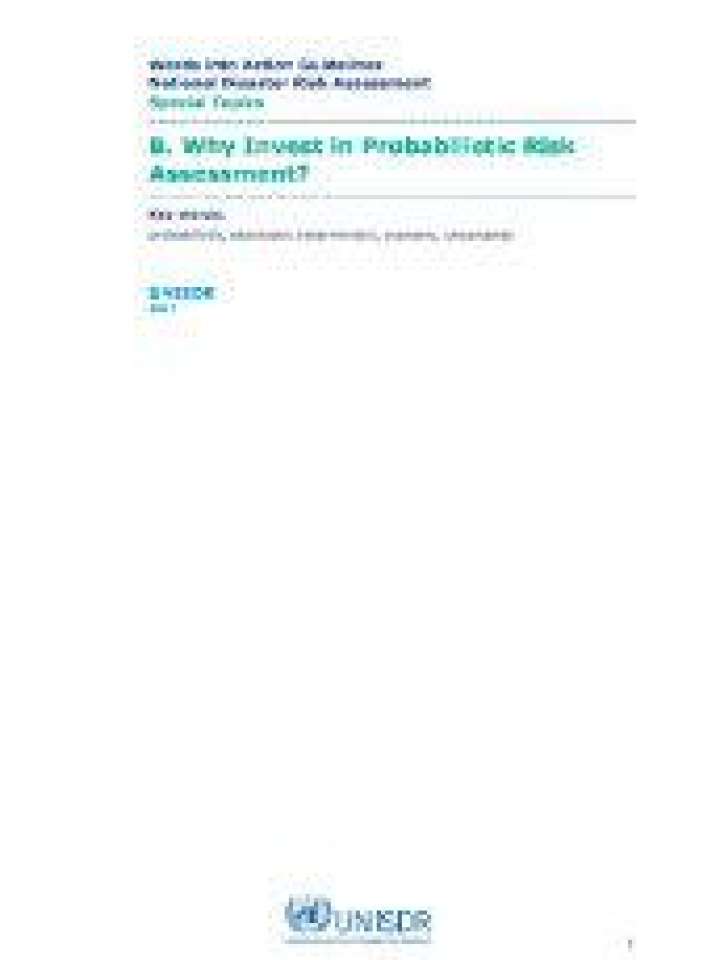Why invest in probabilistic risk assessment?
This document is the second in a series of special topics for consideration, as part of the Words into Action Guidelines on National Disaster Risk Assessment published by UNISDR. This section focuses on the use of probabalistic models for risk assessment to facilitate better risk management and communication.
Policy and investment decisions for managing disaster risk rely on a sound knowledge of the risks. During the past decade, substantial progress has been made across the world in improving tools for hazard and risk assessment and producing risk information at different levels and on different scales. Much of this information exists in the form of probabilistic models and risk data that originated in the insurance sector in response to disasters in the late 1980s and early 1990s, which were costly in terms of insurance and economic losses.
Since then, probabilistic models have become a staple tool for facilitating better risk management in (re)insurance and are increasingly forming the basis for comprehensive risk-management strategies in civil society, government and the private sector – ultimately enabling risk reduction, risk adaptation and risk transfer mechanisms to be assessed individually and together as part of a holistic approach.
